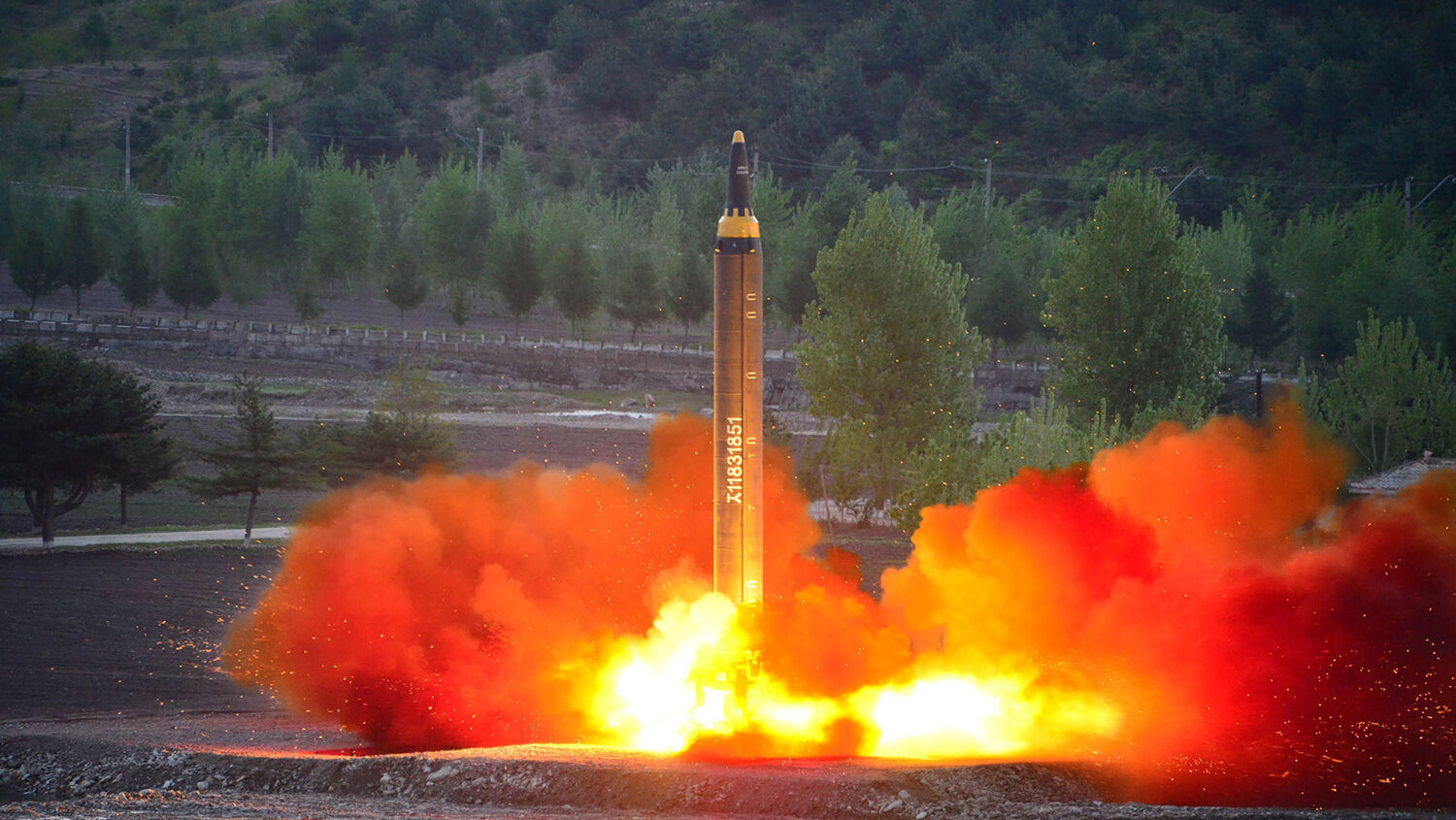
North Korea’s Latest Missile Launch Marks a Worrying Milestone
North Korea conducted a successful missile test on May 14, marking a milestone in the nation’s missile program, and possibly a milestone for its nuclear program as well.
The weapon was a mid-to-long-range Hwasong-12 missile, launched from a site near the city of Kusong in the western part of the nation. State-run media said it reached an altitude of 1,312 miles and flew 490 miles before falling into the Sea of Japan near Russia. Experts say that had it been fired with the typical, more lateral trajectory—rather than with such a lofty arch—the missile could have traveled some 2,800 miles.
That places the United States Andersen Air Force Base in Guam within the missile’s range.
After the launch, North Korean leader Kim Jong-un said the Hwasong-12 can carry “a large-size, heavy nuclear warhead.” He said, “If the U.S. awkwardly attempts to provoke the [North], it will not escape from the biggest disaster in history.”
Taken altogether, this means that what initially looked like just another missile launch was actually a landmark development, and an undeniable indication of how rapidly the North Korean threat is growing.
“North Korea’s latest successful missile test represents a level of performance never before seen from a North Korean missile,” wrote aerospace engineer John Schilling on the 38 North blog, published by the U.S. Korea Institute at Paul H. Nitze School of Advanced International Studies (sais).
“It appears to have not only demonstrated an intermediate-range ballistic missile (irbm) that might enable them to reliably strike the U.S. base at Guam,” Schilling wrote, “but more importantly, may represent a substantial advance to developing an intercontinental ballistic missile (icbm).”
Kim Jong-un has long threatened to develop a nuclear-capable icbm that is able to strike the United States mainland, about 4,800 miles from the North. And Sunday’s successful test shows that the quest for such a weapon is advancing faster than analysts predicted.
Writing for the National Interest on May 16, Bruce Klingner, senior research fellow for Northeast Asia at the Heritage Foundation, said the launch “means Pyongyang’s quest to develop an icbm is progressing more quickly than previously thought.”
At the beginning of this year, many Korean watchers voiced skepticism about Kim’s claim that his military was in the “late stages” of developing such a weapon. “There are far fewer skeptics today,” Klingner said, following Sunday’s test.
Mira Rapp-Hooper, an Asia and nuclear expert at the Center for a New American Security, said Sunday’s launch means “an icbm may be only a year or so away.”
U.S. Adm. Harry Harris, head of the U.S. Pacific Command, said North Korea is a “clear and dangerous threat” to America and its Asian allies. “Combining nuclear warheads with ballistic missile technology in the hands of a volatile leader like Kim Jong-un is a recipe for disaster,” he said.
Sunday’s launch also marks the first from the North since South Korean President Moon Jae-in entered office last week. In contrast to U.S. President Donald Trump’s emphasis on using pressure tactics on the North, Moon has advocated expanded engagement and dialogue with Pyongyang to stabilize the Peninsula. However, Moon and Trump may still find common ground on how to rein in the North, especially since Trump has more recently said he would consider meeting with Kim “under the right circumstances.” In light of Sunday’s successful launch, questions about whether Washington and Seoul will find a common approach, and what it might be based on, take on new urgency.
On Wednesday, Moon said he believes there is now a “high possibility of military conflict” with North Korea.
Even if war does not erupt on the Korean Peninsula, the rapid progress in Pyongyang’s missile and nuclear programs is contributing to an arms race among many Asian states, and sowing uncertainty and instability throughout the region.
This instability is helping to usher in an era that Bible prophecy calls “the times of the Gentiles.” To understand what this era is about and how it will affect you, watch Trumpet editor in chief Gerald Flurry’s video presentation on this vitally important topic.
